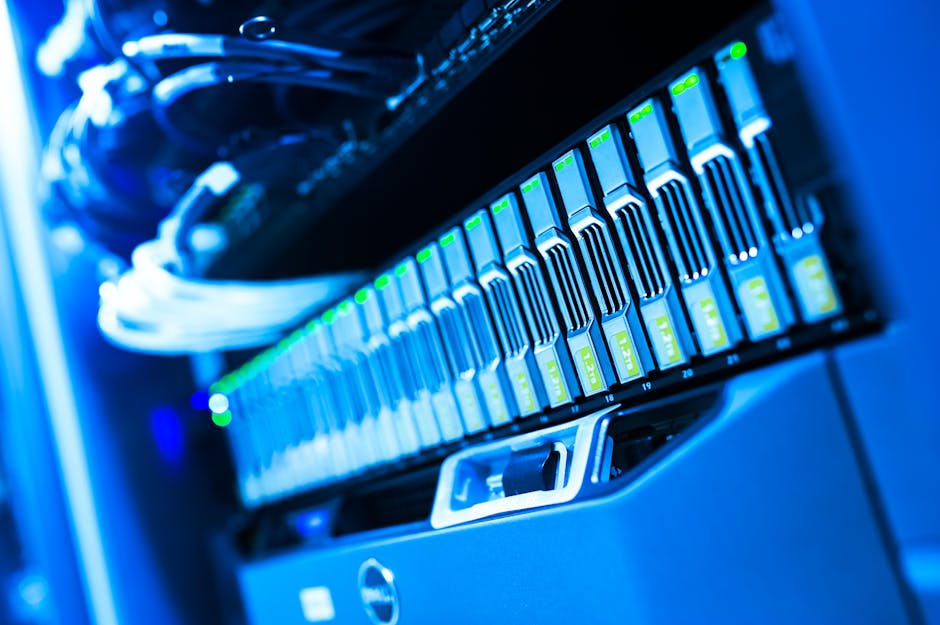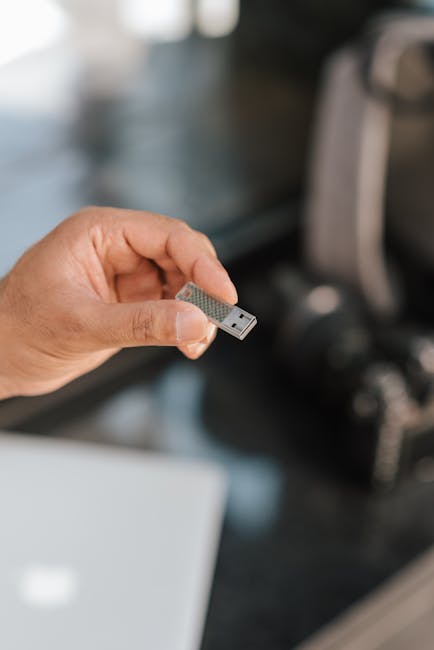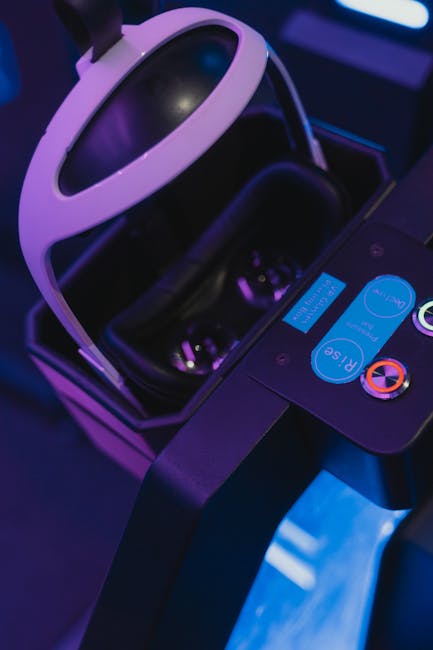Unlock encrypted content
Please enter your SSCE key to initiate on-the-fly decryption.
Decryption key: (Click cancel if you don't have the key)
Copied link to clipboard.
This feature is unavailable for free accounts. Upgrade now and enjoy all Premium benefits.
Go Premium!
This feature is unavailable for free accounts. Upgrade now and enjoy all Premium benefits.
Go Premium!
Please open this page in browser ( Google Chrome or Safari ) to use this feature.
Open In Browser
Efficient Backup and Recovery Processes: Ensuring Data Security and Continuity
Random related video for this blog.
Copied share link to clipboard.
From critical business documents to cherished personal memories, the loss of data can have devastating consequences. This is why efficient backup and recovery processes are essential for safeguarding data and ensuring its availability in the event of a disaster or system failure.
Why Backup and Recovery Processes Matter
Efficient backup and recovery processes are crucial for several reasons. Firstly, they provide a safety net against data loss. Whether it's due to hardware failure, accidental deletion, or a cyberattack, having a backup ensures that your data can be restored and accessed when needed. Secondly, backup and recovery processes allow for business continuity. In the event of a disaster, such as a fire or flood, having backups stored off-site ensures that operations can resume quickly and minimize downtime. This is particularly important for businesses that rely heavily on digital systems and data for their day-to-day operations. Lastly, backup and recovery processes contribute to data integrity and compliance. With increasingly stringent data protection regulations, such as the General Data Protection Regulation (GDPR), organizations must ensure the security and privacy of personal data. Having reliable backups helps organizations meet these requirements and mitigate potential legal and financial consequences.Generative Adversarial Networks (GANs): Pushing the Boundaries of Artificial Intelligence
Generative Adversarial Networks (GANs) have emerged as a powerful tool in the field of artificial intelligence (AI). GANs consist of two neural networks: a generator and a discriminator. The generator creates new data instances, such as images or text, while the discriminator evaluates the generated data against real data. The interplay between the generator and discriminator allows GANs to learn and improve over time, generating increasingly realistic and high-quality outputs. GANs have been used in various applications, including image synthesis, video generation, and even the creation of deepfake videos. One practical application of GANs is inthe field of computer graphics and design. GANs can be used to generate realistic images, textures, and 3D models, reducing the need for manual creation and speeding up the design process. They can also be used in data augmentation, where GANs generate synthetic data to augment the training set for machine learning models, improving their performance.
Cloud File Synchronization: Seamlessly Access and Share Files Across Devices
Cloud file synchronization has revolutionized the way we access and share files. With cloud storage services, such as FileLu, users can store their files in the cloud and access them from any device with an internet connection. This eliminates the need for physical storage devices and allows for seamless collaboration and file sharing. One of the key benefits of cloud file synchronization is the ability to access files on the go. Whether you're working from a laptop, tablet, or smartphone, you can easily access your files and continue working without any interruptions. This is particularly useful for remote workers, who often need to access files from different devices and locations. Another advantage of cloud file synchronization is the ability to share files with others. Instead of sending large attachments via email or using physical storage devices, users can simply share a link to the file stored in the cloud. This not only simplifies the sharing process but also ensures that everyone has access to the latest version of the file.Space-based Solar Power: A Sustainable Solution for Clean Energy
Space-based solar power is a concept that involves capturing solar energy in space and transmitting it to Earth for use as a renewable energy source. The idea is to place large solar panels in orbit around the Earth, where they can capture sunlight without being obstructed by the atmosphere or weather conditions. One of the main advantages of space-based solar power is its potential for generating large amounts of clean energy. Unlike traditional solar power, which relies on sunlight reaching the Earth's surface, space-based solar power can operate 24/7, as there are no day-night cycles or cloudy conditions in space. This makes it a reliable and consistent source of renewable energy. Another benefit of space-based solar power is its scalability. With solar panels in space, there is virtually no limit to the amount of energy that can be generated. This makes it an attractive solution for meeting the growing global energy demand without relying on finite resources or contributing to greenhouse gas emissions.Real-time Data Synchronization: Ensuring Data Consistency and Accuracy
Real-time data synchronization is crucial for businesses that rely on up-to-date information for their operations. Whether it's inventory management, financial transactions, or customer data, having accurate and synchronized data is essential for making informed decisions and providing timely services. Real-time data synchronization ensures that changes made to data in one system are immediately reflected in other systems. This can be achieved through various technologies, such as database replication, message queues, or application programming interfaces (APIs). By keeping data synchronized in real time, businesses can avoid data inconsistencies, duplicate entries, and other errors that can arise from outdated or conflicting information. One practical example of real-time data synchronization is in e-commerce. When a customer places an order on an e-commerce website, real-time synchronization ensures that the order details are immediately updated in the inventory management system, triggering the fulfillment process. This allows for accurate inventory tracking, preventing overselling or stockouts.Biohacking: Exploring the Intersection of Biology and Technology
Biohacking refers to the practice of using technology and scientific knowledge to enhance or modify the human body. It encompasses a wide range of activities, from self-experimentation with supplements and wearable devices to more advanced procedures, such as genetic engineering or implanting biochips. One area of biohacking that has gained attention is biohacking for health and wellness. Many individuals are using wearable devices, such as fitness trackers or smartwatches, to monitor their health metrics, track their exercise routines, and make informed decisions about their lifestyle. This data-driven approach to personal health management allows individuals to optimize their well-being and make proactive changes to their habits. Another aspect of biohacking is the exploration of cognitive enhancement. Some individuals are experimenting with nootropics, substances that are believed to enhance cognitive function, memory, or focus. While the efficacy and safety of these substances are still being studied, biohackers are pushing the boundaries of what is possible in terms of cognitive performance. In conclusion, efficient backup and recovery processes, the power of Generative Adversarial Networks (GANs), cloud file synchronization, space-based solar power, real-time data synchronization, and biohacking are all fascinating topics that highlight the advancements and potential of technology in various fields. These trends and innovations have the potential to shape our future and provide solutions to pressing challenges. By embracing these technologies and understanding their implications, we can harness their benefits and drive progress towards a more connected, sustainable, and innovative world.Frequently Asked Questions (FAQs)
Question: How does FileLu ensure data security? Answer:
FileLu ensures data security through robust encryption algorithms and secure data centers. All data stored in FileLu is encrypted both at rest and in transit, providing an extra layer of protection against unauthorized access.
Question: Can I transfer large files using FileLu? Answer:
Yes, FileLu offers large file transfer capabilities, allowing users to send files up to 250 GB in size. This makes it an ideal solution for sharing large files with colleagues, clients, or friends.
Question: What are the benefits of cloud file synchronization? Answer:
Cloud file synchronization allows for seamless access to files from any device, simplifies collaboration and file sharing, and provides a safety net against data loss. It also eliminates the need for physical storage devices and enables remote work.
Question: How can GANs be used in computer graphics and design? Answer:
GANs can be used to generate realistic images, textures, and 3D models, reducing the need for manual creation and speeding up the design process. They can also be used in data augmentation, where GANs generate synthetic data to augment the training set for machine learning models, improving their performance.
Question: What is the concept of space-based solar power? Answer:
Space-based solar power involves capturing solar energy in space and transmitting it to Earth for use as a renewable energy source. It offers the potential for generating large amounts of clean energy that is available 24/7, making it a reliable and scalable solution for meeting the global energy demand.
Case Studies
Case Study 1: Company X Ensures Data Availability with Efficient Backup and Recovery Processes Company X, a leading e-commerce platform, understands the importance of data availability for their business operations. They have implemented an efficient backup and recovery process using FileLu's cloud storage service. By regularly backing up their critical business data, they ensure that in the event of a system failure or data loss, they can quickly restore their data and resume operations without significant downtime.
Case Study 2: Startup Y Harnesses GANs for Innovative Product Design Startup Y, a design and manufacturing company, is constantly pushing the boundaries of product design. They have incorporated GANs into their design process to generate realistic 3D models and textures, reducing the time and effort required for manual design. This has allowed them to bring products to market faster and stay ahead of their competitors.
Case Study 3: City Z Implements Real-time Data Synchronization for Efficient Service Delivery City Z, a smart city initiative, has implemented real-time data synchronization to improve their service delivery. By synchronizing data across various systems, such as transportation, waste management, and public safety, they can make informed decisions in real-time and provide efficient and timely services to their residents. This has resulted in improved traffic management, reduced waste collection times, and enhanced public safety. By embracing these technologies and understanding their implications, businesses and individuals can leverage their benefits and drive progress towards a more connected, sustainable, and innovative future.
By Amelia Isabella
Email: [email protected]
Related
User-friendly Interface: Simplifying Interstellar Colonization and Data Storage
July 11, 2023
Read More
Efficient Data Replication: Ensuring Reliability and Security in Cloud Storage...
July 12, 2023
Read More
Introducing FileDrop: Cross-Device File Synchronization and Seamless Sharing
July 12, 2023
Read More
NAS Limitations: Exploring the Potential of Internet Security and Efficient...
July 12, 2023
Read More
Intuitive File Collaboration Interfaces: Enhancing Productivity and Efficiency
July 12, 2023
Read More
Popular
Exploring the Benefits of Cloud Storage and Innovative Technologies in...
November 26, 2025
Read More
The Future of Digital Transformation: Exploring Smart Homes, Efficient File...
November 30, 2025
Read More
Latest
The Future of Digital Transformation: Exploring Smart Homes, Efficient File...
November 30, 2025
Read More
Exploring the Benefits of Cloud Storage and Innovative Technologies in...
November 26, 2025
Read More
The Future of Technology: Exploring Biohacking, Space Tourism, and Digital...
November 23, 2025
Read More
The Future of File Sharing: Streamlined Workflows for Photographers and...
November 19, 2025
Read More
Exploring the Intersection of Technology: From Cybersecurity to Augmented Reality...
November 16, 2025
Read More
The Future of File Management: Embracing Edge Computing and Efficient...
November 12, 2025
Read More
The Future of File Sharing: Exploring User-Friendly Solutions and Data...
November 5, 2025
Read More
The Future of Cloud Storage: How FileLu Empowers Creative Professionals...
November 2, 2025
Read More
The Future of Autonomous Technologies: Innovations in Robotics, File Sharing,...
October 29, 2025
Read More
Emerging Technologies Revolutionizing File Management: From Li-Fi to Robust Collaboration...
October 26, 2025
Read More
Emerging Technologies: Exploring the Impact of File Access Auditing, Genetic...
October 19, 2025
Read More
The Future of Data Storage: Exploring Advanced Encryption, Mobile Integration,...
October 5, 2025
Read More
Exploring the Future of Data Management: Security, Efficiency, and Cognitive...
September 28, 2025
Read More
Revolutionizing Data Management: Innovations in Storage, Security, and Sustainable Technology.
September 24, 2025
Read More

















